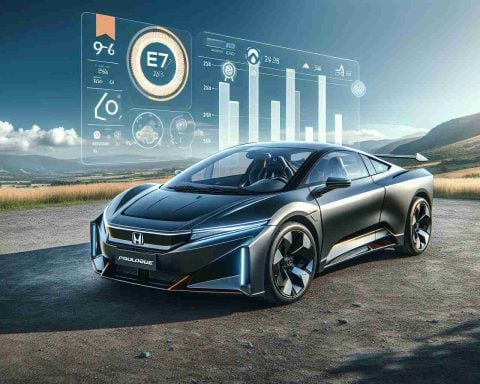Key Takeaways:
- Electric vehicle drivers enjoy free charging in 30 of South Carolina’s 47 state parks, enhancing eco-friendly travel.
- The initiative, a collaboration with Rivian, links sustainability with outdoor recreation, addressing climate change concerns.
- Visitors can charge their vehicles while exploring scenic sites like Lake Jocassee and Huntington Beach, promoting stress-free adventures.
- User feedback highlights the convenience and integration of chargers, though some report technical issues and parking challenges.
- This initiative illustrates how charging infrastructure can blend with natural environments, encouraging eco-conscious exploration.
In the lush landscapes of South Carolina, a quiet revolution offers electric vehicle drivers an enticing perk: free charging in the heart of nature. Across 30 of the state’s 47 parks, free EV chargers stand ready, quietly humming with potential at scenic spots from the shores of Lake Jocassee to the sandy paths of Huntington Beach.
The initiative, born from a collaboration between the state’s parks department and Rivian, deftly marries sustainability with recreation. As the world tackles climate change, South Carolina steps forward, inviting travelers to explore verdant trails with the peace of mind that their electric steeds will be juiced and ready for the journey home.
Imagine arriving at Poinsett State Park, your car low on charge, but your spirits high. You plug in, and with your worries alleviated, you embark on a hiking trail, the whisper of pines your companion. An hour or two later, refreshed by nature and adventure, you return to a recharged vehicle. With each mile automatically restored, these stations offer not just electricity but an opportunity to immerse in the wild, stress-free.
Online praise pours in—users rave about the convenience and seamless integration of these chargers into their park experiences. But, as with all innovations, there are hiccups. Occasional technical glitches or non-electric vehicles occupying spots frustrate some visitors, yet the overall response remains positive.
This blend of convenience and environmental consciousness paints a promising picture: a world where charging infrastructure weaves harmoniously into the tapestry of nature, encouraging more people to explore and appreciate the outdoors sustainably. In South Carolina, a vision unfolds—a world where you can escape into nature without leaving carbon footprints behind.
Escape into Nature: Discovering Free EV Charging at South Carolina Parks
How-To Steps & Life Hacks for Using EV Chargers at South Carolina Parks
1. Check Availability: Before heading to a state park, verify the availability of EV charging stations through reliable apps like PlugShare or the park’s official website.
2. Plan Your Visit: Factor in charging time while planning your activities. Most Level 2 chargers may take a few hours for a full charge, allowing you to comfortably enjoy the park’s amenities.
3. Bring Your Equipment: While most chargers provide cables, carrying your own compatible charging cable can be a lifesaver in case of equipment issues.
4. Be Mindful of Etiquette: As a courtesy to others, move your EV as soon as it’s charged and report any non-electric vehicles using charging spots to park staff.
5. Stay Informed: Keep up with any maintenance updates or changes to the charging infrastructure by checking the park department’s announcements or related community forums.
Real-World Use Cases
These complimentary charging stations are particularly advantageous for:
– Frequent Park Visitors: For locals or repeat visitors, the convenience of free charging turns a day trip into a cost-effective, eco-friendly outing.
– Road Trippers: Travelers exploring multiple parks along the journey can seamlessly integrate charging stops with sightseeing.
– Environmental Enthusiasts: Advocates of sustainable travel can reduce their carbon footprint while indulging in nature’s beauty.
Market Forecasts & Industry Trends
The integration of charging stations in natural and recreational settings is climbing sharply. According to a report by BloombergNEF, worldwide EV charging points are expected to grow from 1 million in 2020 to over 40 million in 2030. This trend underlines an increasing demand for charging infrastructure in non-urban areas, promoting eco-tourism.
Reviews & Comparisons
Most user reviews highlight:
– Pros: Convenience, alignment with sustainable travel, incentives to revisit parks.
– Cons: Occasional technical issues, limited spots during peak times, charger accessibility blocked by non-electric vehicles.
Compared to urban settings, these park chargers provide both functionality and an exceptional experience intertwined with natural explorations.
Controversies & Limitations
Some concerns include:
– Infrastructure Costs: Skeptics argue about the long-term financial sustainability of offering free services without subsidy or support.
– Technology Issues: Compatibility and maintenance issues may lead to downtime, deterring users during peak visiting periods.
Features, Specs & Pricing
– Charger Types: Most parks are equipped with Level 2 chargers, ideal for day visitors or longer park stays.
– Pricing: Currently free, providing economic incentives for using greener transportation options.
Security & Sustainability
Fuelling this program is a pledge to sustainability, cutting tailpipe emissions while encouraging cleaner travel. Measures are in place to ensure the security of the chargers, monitored by park personnel.
Insights & Predictions
With growing awareness and need for sustainable travel options, South Carolina’s initiative is a possible blueprint for similar eco-friendly projects elsewhere.
Pros & Cons Overview
– Pros: Eco-friendly, convenient, travel cost savings, park collaboration.
– Cons: Possible delays, limited charger availability, non-EV vehicles misusing spaces.
Actionable Recommendations
– Always plan your EV charging needs by checking sites like PlugShare.
– Advocate for broader implementation through feedback to park management.
– Support initiatives to fund expansion to more parks.
By marrying convenience with ecological mindfulness, South Carolina’s approach exemplifies a sustainable future where nature embraced supports our technological advancements. Consider it not just a recharge for your car, but for the soul. Enjoy responsibly!


















